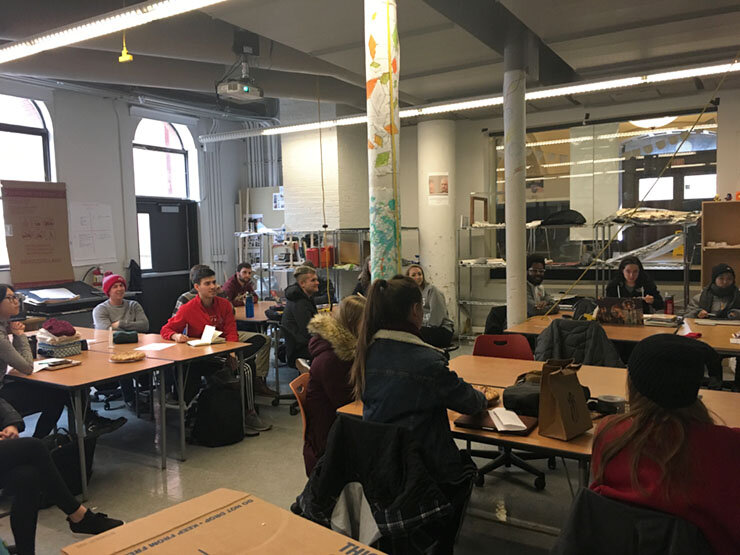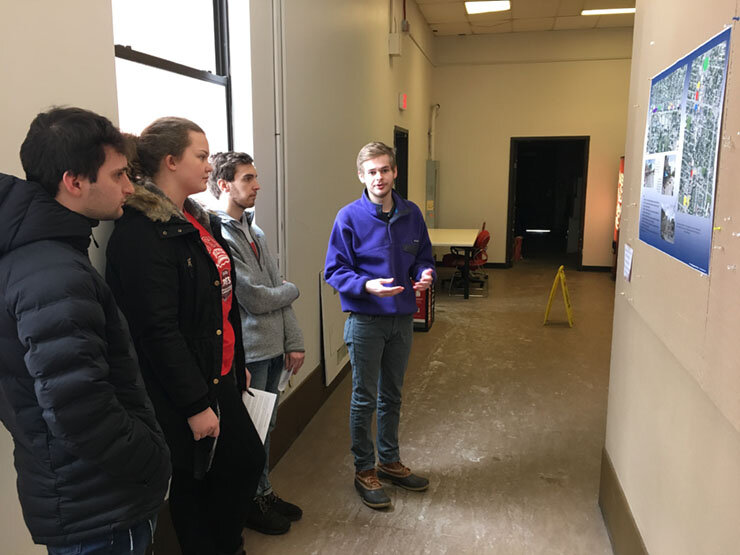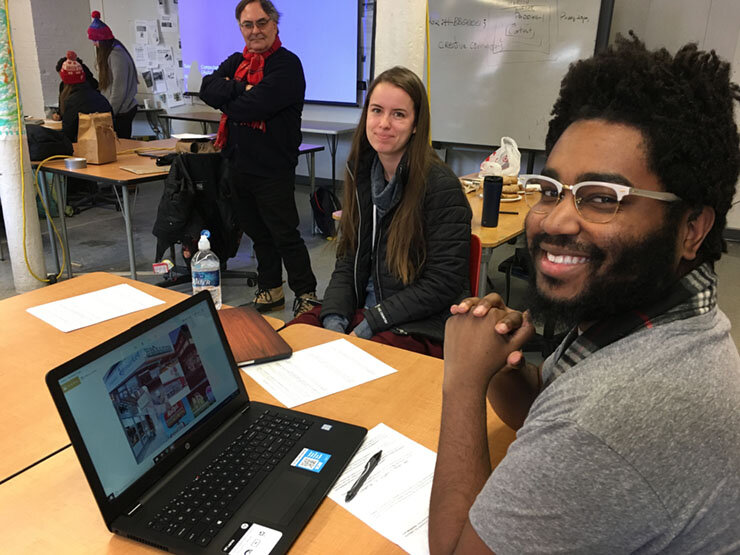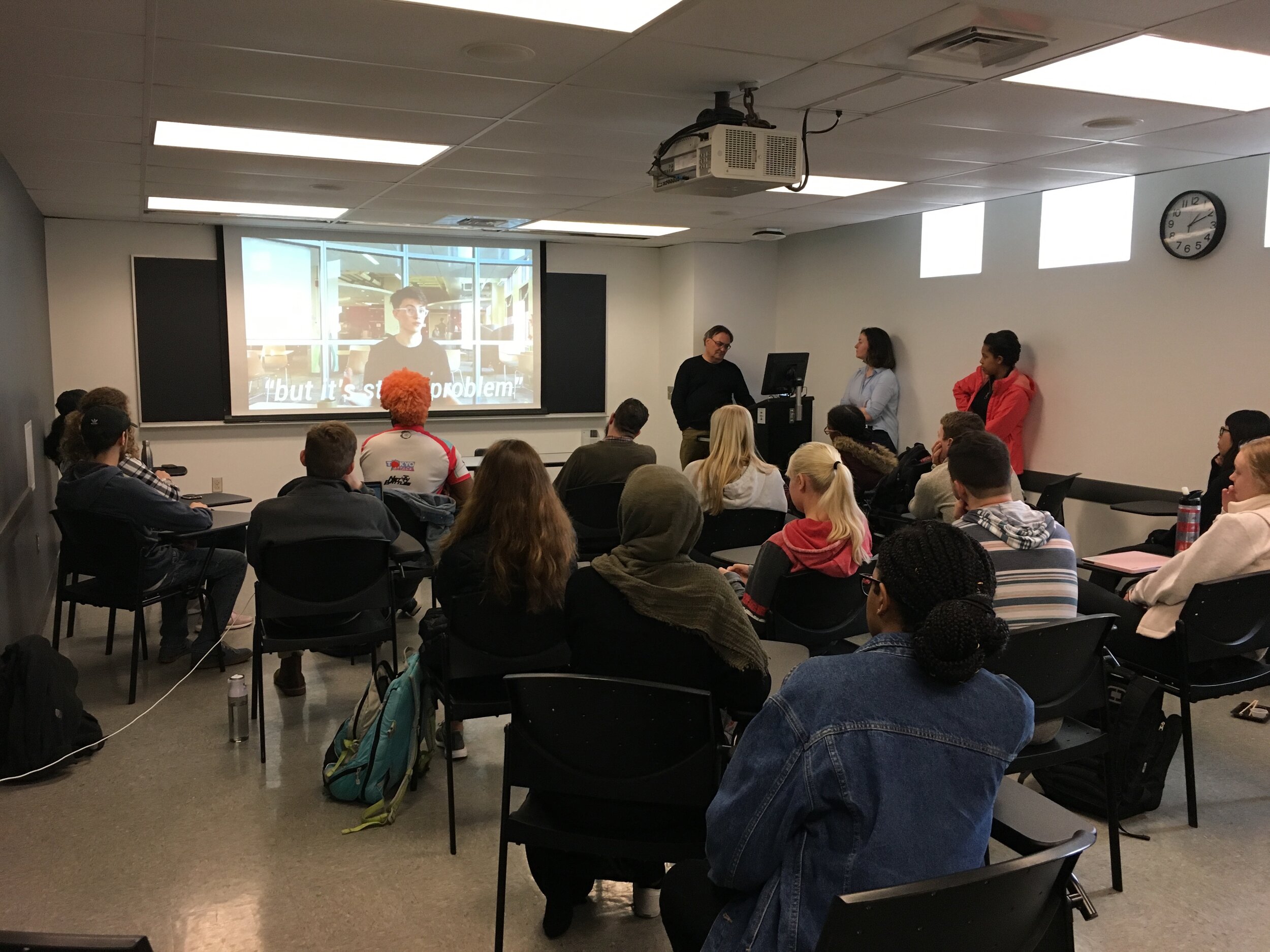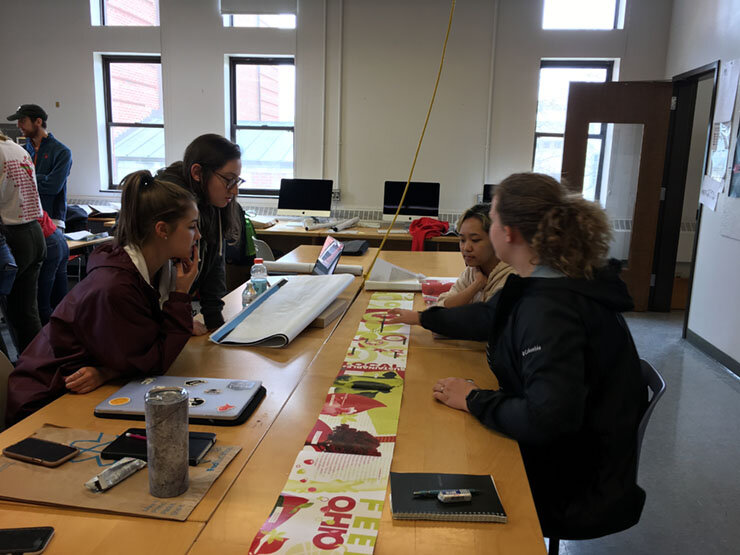Credits: Ethan Newburger, Dana Niehaus, Nicholas Pentony, Nick Romanowski, Claire Spicer, Christine Stankiewicz, Sherry Xiao, Sagul Ali, Ava Berzinsky, Nadja Dewberry, Tira DiYanni, Amber Lanese, Lily Li, Sarah Martin.
The central mission of the Livable Futures Collaborative is to explore effective ways of combining artistic, scientific, and humanistic methodologies in order to address near-horizon challenges that affect both planetary and human conditions. In that spirit, we brought together design arts and humanistic inquiry in a teaching cluster focusing on a topic that involves wide-ranging elements of genetics, environmental science, geopolitics, economics, and art: the future of food. Contemplating the problems and promises associated with how we cultivate, process, and distribute food is therefore an integral part of envisioning what shape our livable futures might take.
Our Spring 2019 teaching cluster involved two courses: American Food Cultures (Comparative Studies 2420, taught by Rick Livingston) and Introduction to Visual Communication Design II (Design 3153, taught by Peter Chan). With the assistance of Ben McCorkle, who participated in curriculum design and meet with students as a consultant with expertise in visual rhetoric, students in both classes collaborated to address the topic of food futures.
Working in small teams—both in person and online—students developed a variety of design projects (sketchbooks, “food landscape” photo-essays, posters, digital signage, social media, etc.) as part of a campaign to help raise awareness of sustainable food practices in general.
More specifically, this project aligned with The OSU Panel on Food Sustainability’s goal to have the university purchase 40% of its food from local and sustainable sources by the year 2025.
These project deliverables were displayed and distributed to reach OSU students, staff, faculty, and other relevant audiences.
Student posters were also displayed at the On Food and Faith Conference, held in May at The Methodist Theological School in Ohio and funded by OSU inFACT. Among the attendees was former Vice President Al Gore (pictured).
Display event in Mershon lobby, Sullivant Hall
This teaching cluster design draws upon evidence-based teaching practices commonly acknowledged in teaching and learning research. It presents students with an opportunity to engage in collaborative, experiential learning with a long-term project that results in real-world impact for actual audiences. Over the course of the semester, we observed, documented, and analyzed how students interacted in the cluster, we are now planning for future publications.

